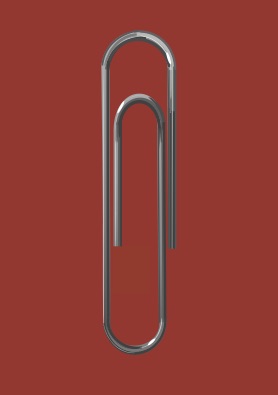Buy a print
PAPER CLIP
A simple piece of galvanised steel wire bent into an elongated spiral helps keep papers together and in the right order.
HISTORY
The first paper clip was patented in the USA by Samuel Fay in 1867. Like the other 50 patents filed prior to 1899, it bears little resemblance to the current clip. The most common type still in use was not patented, but was made in the UK in the early 1870’s by the Gem Manufacturing Company. This is similar to the clip depicted, although it has a square base. The version with a rounded base was first made by William Middlebrook from Connecticut who patented a machine for their manufacture in 1899.
A claim that the Norwegian, Johan Vaaler, invented the original clip is now in doubt but it has subsequently become a national myth.
The Paper Clip has had many uses alongside its primary function, including lock picking and SIM card removal. During the 1940’s it was worn on the lapel as a symbol of resistance to the Nazi occupation.
MAKING
The standard paper clip is made from 0.8 mm diameter steel wire, 98.3 mm long and bent into shape on a forming machine which wraps the wire around steel pegs. The upturned inner curve is formed to enable the clip to raise as the sheets of paper are inserted and the outer curves prevent it from tearing the contents. The thickness and springiness of the wire also has to be such that it ensures the clip is strong enough to retain its contents for long periods and even withstand repeated use.
DRAWING
The paper clip may appear to be a simple object but the fine detail of the cylindrical wire is visually complex and so relatively difficult to capture. The curves catch the light in a variety of ways and the subtle shadows are obscure. However, the bright highlights, which define the three dimensional form, must be rendered carefully if a plausible image is to be produced. This is particularly true of the inner section which rises above the rest of the clip.




To order a print
click here to go to the PRINTS page.









